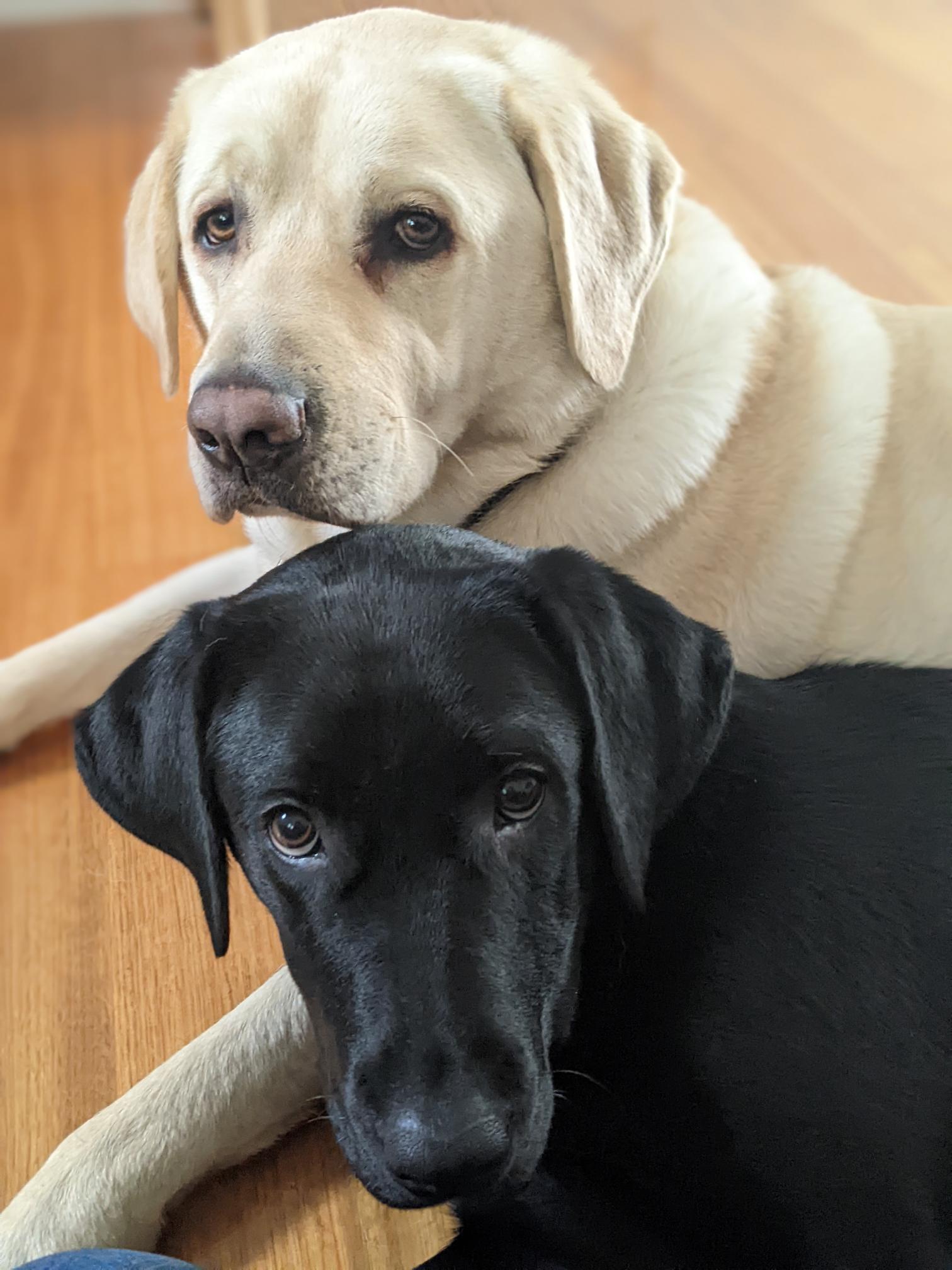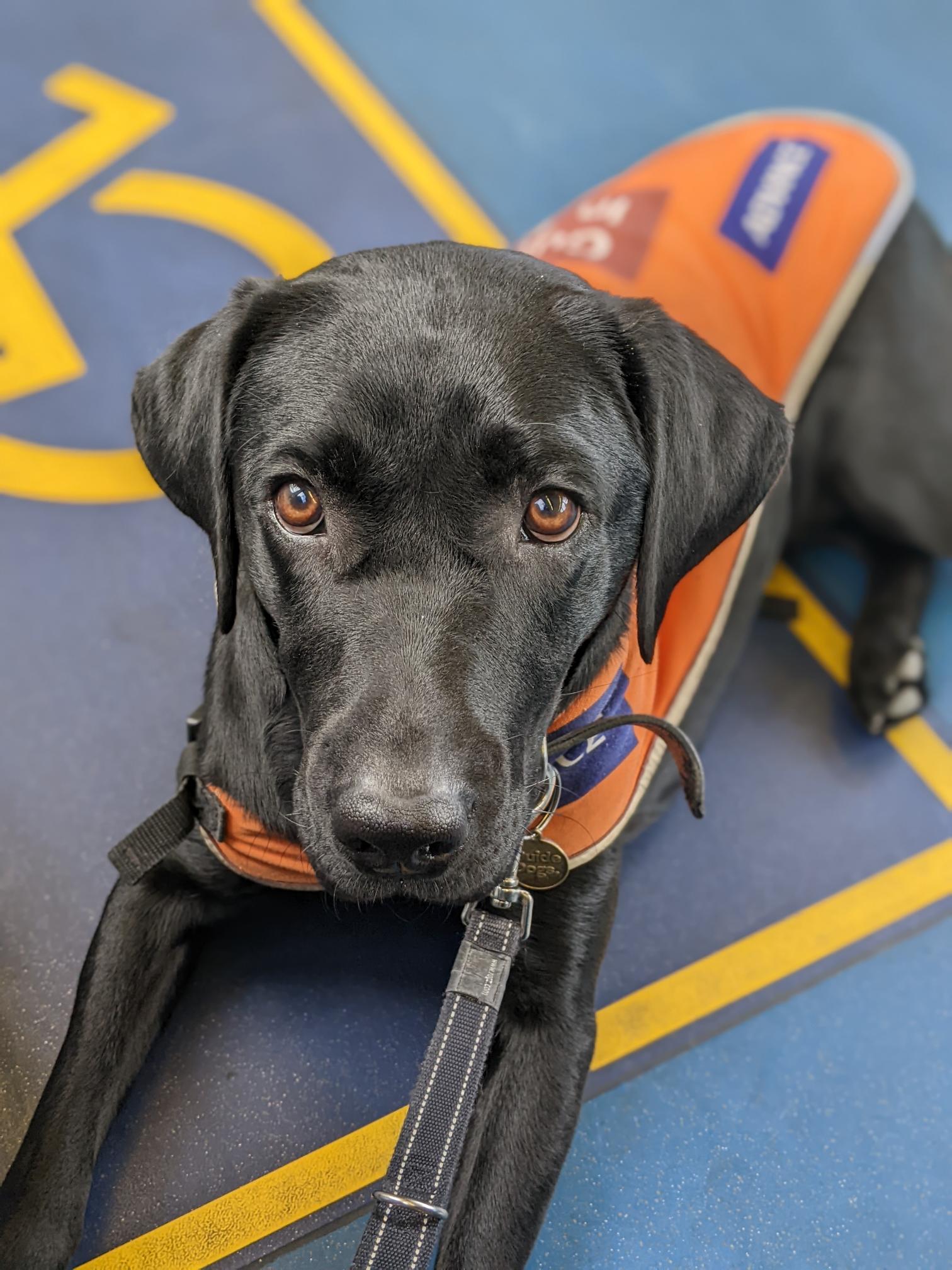We talked to our editor Jen about her experience being a Puppy Raiser for Guide Dogs. Jen is passionate about helping train future Guide Dogs and supporting people in our community living with disability. Jen has raised 2 puppies – Troy and Janice.
The life of a Puppy Raiser
Puppy raising involves looking after the puppy from around 8 weeks to when they go in for assessment – usually when they are 14 months old. Your main job is providing them with a home, teaching them basic obedience skills and how to walk nicely on lead. You also need to gradually expose them to increasingly complex and challenging environments. For example, moving out of the home, to quiet streets and small shops, all the way up to big shopping centres and the CBD. This also includes introducing them to different types of public transport. You are supported by a Puppy Development Advisor along the way, who advises you on how to train them and when the puppy is ready to advance to a more challenging environment.
Puppy Raising also includes socialising the pup with other dogs and humans, just like you would with any other dog. You attend puppy classes run by Guide Dogs when they are young to learn basic dog handling skills, and attend regular 'puppy enrichment groups', where they practice staying calm with other Guide Dog puppies around.
You don't teach them any of the tricky Guide Dog skills like stopping for traffic. They learn more advanced skills from the Guide Dog Trainers if they are assessed
as being suitable for Guide Dog training. There is a big emphasis on getting them
to ignore distractions, which is quite different from a pet dog, who you might allow
to sniff on walks and meet other dogs you come across.
What happens next?

We took on Janice when she was 5 months old. This means she was 18 months when she went for assessment, which is quite a bit later than usual.
We took her for her assessment a few weeks ago. She stayed at the Guide Dogs' Campus and worked with a Guide Dog Trainer every day for a week. They walked her in increasingly complex environments to assess her suitability. Unfortunately, they determined that she was too anxious to progress to Guide Dog training or to pursue one of the other career paths open to her, such as becoming a Therapy Dog. The standards required to become a Guide Dog or Therapy Dog are exceptionally high and not every dog is suited to these demanding roles. If this is the case, the dogs are offered a career change, and like Janice, may be 'reclassified' as a
pet and offered for adoption.
for guiding. He's the reason why we said no to keeping Janice, as if we want to raise another Guide Dog, having 2 of our own as well would be too much to handle.
We probably will take on another puppy to raise, even though it is painful to give them up at the end, it's so rewarding knowing we are supporting people with blindness or low vision to be independent and live the life of their choosing. We want to do something that matters.
Update – a new chapter
Since writing this article, Jen has indeed taken on a new Guide Dog puppy – a black Labrador named Nara. We hear she’s a sweetheart and a very smart little girl!
If you're interested in raising a puppy or want to read more about the process, visit the Guide Dogs Victoria website.



